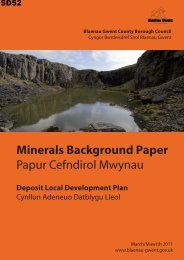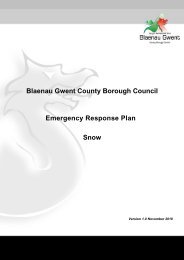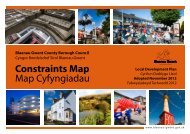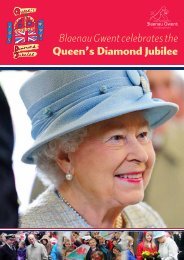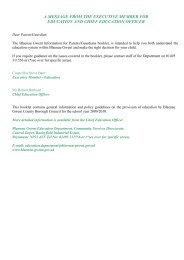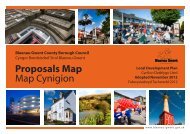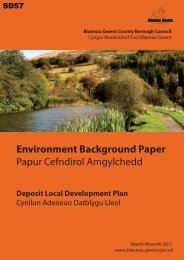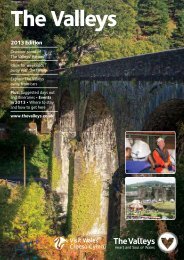Planning Policy Wales - Brecon Beacons National Park
Planning Policy Wales - Brecon Beacons National Park
Planning Policy Wales - Brecon Beacons National Park
Create successful ePaper yourself
Turn your PDF publications into a flip-book with our unique Google optimized e-Paper software.
3.1.7 The planning system does not exist to protect the private interests of one person against<br />
the activities of another. Proposals should be considered in terms of their effect on the amenity<br />
and existing use of land and buildings in the public interest. The Courts have ruled that the<br />
individual interest is an aspect of the public interest, and it is therefore valid to consider the effect<br />
of a proposal on the amenity of neighbouring properties. However, such consideration should be<br />
based on general principles, reflecting the wider public interest (for example a standard of ‘good<br />
neighbourliness’), rather than the concerns of the individual.<br />
3.1.8 When determining planning applications local planning authorities must take into account<br />
any relevant view on planning matters expressed by neighbouring occupiers, local residents and<br />
any other third parties. While the substance of local views must be considered, the duty is<br />
to decide each case on its planning merits. As a general principle, local opposition or support for<br />
a proposal is not, on its own, a reasonable ground for refusing or granting planning permission;<br />
objections, or support, must be based on valid planning considerations. There may be cases where<br />
the development proposed may give rise to public concern. The Courts have held that perceived<br />
fears of the public are a material planning consideration that should be taken into account in<br />
determining whether a proposed development would affect the amenity of an area and could<br />
amount to a good reason for a refusal of planning permission. It is for the local planning authority to<br />
decide whether, upon the facts of the particular case, the perceived fears are of such limited weight<br />
that a refusal of planning permission on those grounds would be unreasonable.<br />
3.1.9 The Assembly Government’s Model Code of Conduct for elected and co-opted members<br />
of county / county borough councils, community councils and national park authorities sets<br />
out recommended standards of conduct they should follow in the performance of their<br />
duties. All relevant authorities are required to adopt the Code and all members must give written<br />
undertakings to be bound by it. A breach of the Code may constitute maladministration, misconduct<br />
or both. Elected members must declare any pecuniary or personal interest in any application<br />
before them and in most cases should not speak or vote on any proposal where they have such an<br />
interest 4 . Officers are expected to observe their authority’s employees’ code of conduct and relevant<br />
professional codes in performing their duties 5 6 7 .<br />
3.2 Exceptions to the process: permitted development rights<br />
3.2.1 The Town and Country <strong>Planning</strong> (General Permitted Development) Order 1995 (GPDO) as<br />
amended gives a general permission for certain defined classes of development or<br />
use of land, mainly of a minor character. The most commonly used class permits a wide<br />
range of small extensions or alterations to dwelling houses. Development requiring Environmental<br />
Impact Assessment does not benefit from permitted development rights. Schemes for Simplified<br />
<strong>Planning</strong> Zones also confer planning permission for developments of types defined in the scheme.<br />
Under the 28 and 56 day determination procedure local planning authorities may require their prior<br />
approval to be obtained before certain permitted development rights can be exercised. In <strong>National</strong><br />
<strong>Park</strong>s and other areas specified in Article 1(6) of the GPDO, and within the areas of land specified<br />
in Article 1(5) of the GPDO - Areas of Outstanding Natural Beauty (AONBs), Sites of Special<br />
30<br />
<strong>Planning</strong> <strong>Policy</strong> <strong>Wales</strong> Edition 3 - July 2010 - Chapter 3 Making and Enforcing <strong>Planning</strong> Decisions


